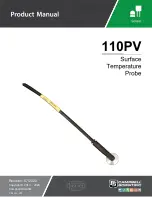
L-DALI User Manual
66
LOYTEC
Version 5.2
LOYTEC electronics GmbH
To verify the e-mail configuration, reboot the device to let the changes take effect and
return to the e-mail configuration page. Then press one of the
Send Test E-Mail
buttons.
Note, that a DNS server must be configured in the IP host settings (see Section 5.2.3) to
resolve the e-mail server host name. The Web UI displays a warning message at the top of
the page, if the DNS configuration is missing.
Figure 56: E-mail Configuration
5.2.11 System Configuration
The system configuration page is shown in Figure 57. This page allows configuring the
device’s system time. The time sync source can be set to
auto
,
manual
,
NTP
, or
L
ON
M
ARK
. In the
auto
mode, the device switches to the first external time source that is
discovered. Possible external time sources are NTP and L
ON
M
ARK
. The option
manual
allows setting the time manually in the fields
Local Time
and
Local Date
. In
manual
mode, the device does not switch to an external time source. Note, that if
NTP
is selected,
the NTP servers have to be configured on the IP-Host configuration page (see Section
5.2.3).
In order to use BACnet as the time source, a BACnet device (time master) must be
configured to distribute time synchronization. For doing so, the BACnet address of the
devices, which shall be synchronized, must be added to the device object of the BACnet
time master (see Section 8.3.2.7). The device synchronizes automatically as soon as it is
contacted by the BACnet time master.
The time zone offset must be defined independently of the time source. It is specified as the
offset to GMT in hours and minutes (e.g., Vienna/Austria is +01:00, New York/U.S.A. is
-06:00). For setting the daylight saving time (DST) pre-defined choices are offered for
Europe and U.S.A./Canada. DST can be switched off completely by choosing
none
or set
manually for other regions. In that case, start and end date of DST must be entered in the
fields below.
The next section on the page allows configuring the earth position of the L-DALI. This
setting defines the longitude, latitude and elevation of the device. The latitude and longitude
are entered as degrees, minutes, and seconds. The altitude (or elevation) is entered in meters
from sea level. This setting is used for an astronomical clock. For fixed locations such as a
building, the position can be entered on this page. For moving locations, this setting can be
updated over the network using the network variable
nciEarthPos
(see Section 8.2.1).
The CSV delimiter specifies what character is used as delimiter when downloading a CSV
file (e.g. trend log file) from the L-DALI.
In
Remote Configuration
it can be configured, whether a replaced device shall
automatically request its configuration from an LWEB-900 server. This remote
configuration request is sent only, if the device does not have a data point configuration.
















































